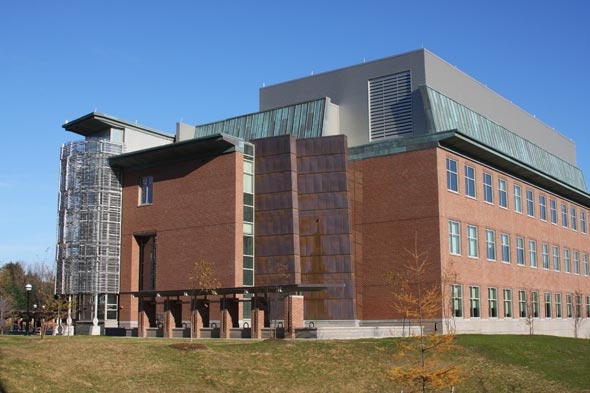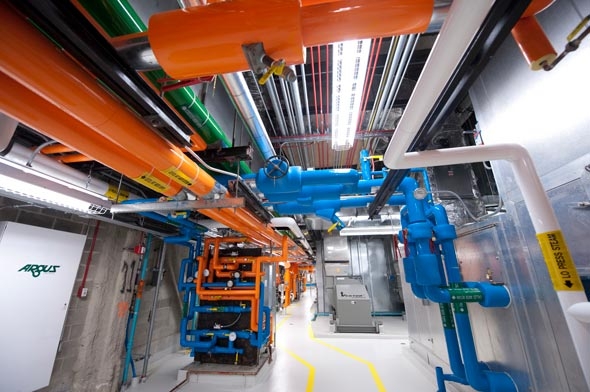Dartmouth’s new Class of 1978 Life Sciences Center has just been awarded a Platinum LEED (Leadership in Energy and Environmental Design) certification, the U.S. Green Building Council’s (USGBC) highest level of recognition for energy efficient and sustainable building practices.

The Class of 1978 Life Science Center was constructed with a high-performance building envelope incorporating high insulation values, a continuous air and vapor barrier, and solar gain control systems. (photo by Joseph Blumberg)
“We are honored to receive the LEED recognition. Sustainability is a core value that we bring to all of our work in capital projects and operations,” says Linda Snyder, vice president for Campus Planning and Facilities. “It is deeply gratifying to know that the Life Sciences Center is providing a platform for our academic programs in the environmental and life sciences.”
LEED is an internationally recognized mark of excellence that provides “a framework for identifying and implementing practical and measurable green building design, construction, operations and maintenance solutions,” according to the USGBC.
“This is a great accomplishment for Dartmouth and the design team,” says Professor Thomas Jack, chair of the Department of Biological Sciences, which is housed in the new building. Jack was a key member of the planning team, bringing his scientific research and teaching experience to bear in the planning process. “Environmental concerns were a priority from the start, even as we interviewed architectural firms and mechanical engineers. People have been working toward this since day one, so it is pretty satisfying to see it happen.”
The 174,500-square-foot Class of 1978 Life Sciences Center (LSC) has been up and running for academic business since fall term classes began in September 2011.

The mechanics room of the Class of 1978 Life Science Center is home to many of the working parts that support and maintain the building’s sustainable practices. Operation of the LSC is showing an annual cost savings of 30 to 35 percent compared to buildings of standard construction. (photo by John Sherman)
Big GreenAmong its environmental features is an air sampling system that monitors the air continually, allowing minute adjustments in airflow that result in energy cost savings.Dartmouth currently has five buildings recognized with Leadership in Energy and Environmental Design (LEED) certification. They are:
- Class of 1978 Life Sciences Center (certified LEED platinum)
- McLaughlin Residential Cluster (certified LEED gold)
- The Fahey/McLane Residence Hall (certified LEED gold)
- Kemeny Hall and Haldeman Center (certified LEED silver)
- Floren Varsity House (certified LEED silver)
A high-performance building envelope system with high insulation values, a continuous air and vapor barrier, and solar gain control systems minimize energy losses.
Rooftop rainwater is channeled into six 10,000-gallon storage tanks and used in the building’s graywater systems, conserving drinking water for its intended use. The water collection and treatment system minimizes runoff, reducing downstream discharge and minimizing contamination of the waterways.
Several “green” roofs constructed of layered soil topped with cultivated grasses also help the energy budget.
With its innovative design and imaginative execution, operation of the LSC is showing an annual energy cost savings of 30 to 35 percent when compared with buildings of standard construction. A substantial gift from the Class of 1978 made the construction of the award-winning building possible.